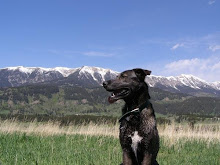



Delilah Jones is one of our hens. She is a little over two years old. She is a Barred Rock, and she is losing feathers on her belly and bum lately. She might be molting, or it might be something else. I can't figure it out... but when I do I will share. Until then, I hope it stays warm for my naked little henny-penny. The good news is, she doesn't seem to notice or care. Barred Rocks are known for being sort of badass.
When I decided that I wanted some egg layers, I researched chicken varieties quite a bit. I think this is definitely an important aspect of getting started with ANY type of animal.
Some questions you might ask yourself when beginning to think about raising animals are:
- Why am I getting this animal? (ex: basic pet, eggs, meat, milk, work animal, guard animal...etc)
- How many animals am I going to get? (ex: is this animal a herd animal? will it get lonely? does it serve it's function better in a group setting? Do I have the space? Do I have the money for proper food and care? Do I have the time? Will my neighbors kill me? Will my significant other kill me?....etc.)
- What is my climate? (ex: hot and dry, rainy as heck, cold as balls...etc.)
- We needed something hardy. Our winters are LONG and COLD in Montana. Birds that were meant for warmer climates just wouldn't work for us. We needed hens that weren't afraid of wading through snow drifts, roosting on icicles, or laying in -20 degree wind chills.
- We needed something that had a high egg ratio, since that was the reasoning behind getting the birds in the first place.
- I wanted some docile birds. We planned to have a small coop, about the size of a phone booth (remember those?), and because the birds would be 'cooped up' (no pun intended) for most of the winter months, they needed to be on the calmer side of things. Antsy animals, or people for that matter, stuck in small places for long periods of time isn't a good thing.
Yes, it's true. Our 2 Rhode Island Reds turned out to be roosters and had to be given away at four months of age to a friend who made them into some nice soup (from what we heard).
About Roosters
Roosters aren't for everybody.
They are loud, very loud, whenever they want, with absolutely no regard to time, eardrums, or neighbors. For our particular situation in the two years past, it just wouldn't have worked out. We had close neighbors on every side, some of whom believed our 2 dopey labs were serious nuisances. We weren't about to stir the pot.
Another aspect of roosters is that they are created to breed, and they "LOVE" their girls. The optimum ratio of rooster to hen is 1:12. This ratio ensures that none of the hens get 'worn out by love', which can cause feather loss, raised stress levels, and decreased egg production. Since we only had 4 hens, a rooster (or 2) just wasn't in the cards for us at that time. Now that we are moving to a much larger area away from neighbors, and our flock continues to grow at 7 hens, I am probably going to bring home a rooster for the girls. The main reason is because of predators. If something alarms a rooster, be it an animal intruder, headlights, or simply a passing plane, they will 'sound their alarms' until they again feel safe. Since our chicken area in Jack Creek is going to be a little farther away from the house, I would love to have a bully around the coop to keep things in check for me. This is just the role for a proud rooster.
*Coincidentally our friends Lynne and Brian suspect they may have brought home a couple of Straight Run rooster chicks this spring, and will need to do some 'rehoming' pretty soon!
That's all for today! Cock-a-doodle-dooooo















Sweet! Thanks for the shout out! Good info and I feel confident in our decision on the barred rocks. I guess we'll find out about the Delaware and the Russian Orloffs. Delawares are cousins of the Rhode Islands (makes enough geographical sense, atleast) and I hear that Russia is cold...they should survive Montana. Our potential roosters are one each of the "yet-to-know-you" breeds.
ReplyDeletei hear russia is cold as well, and has great skiing...
ReplyDelete